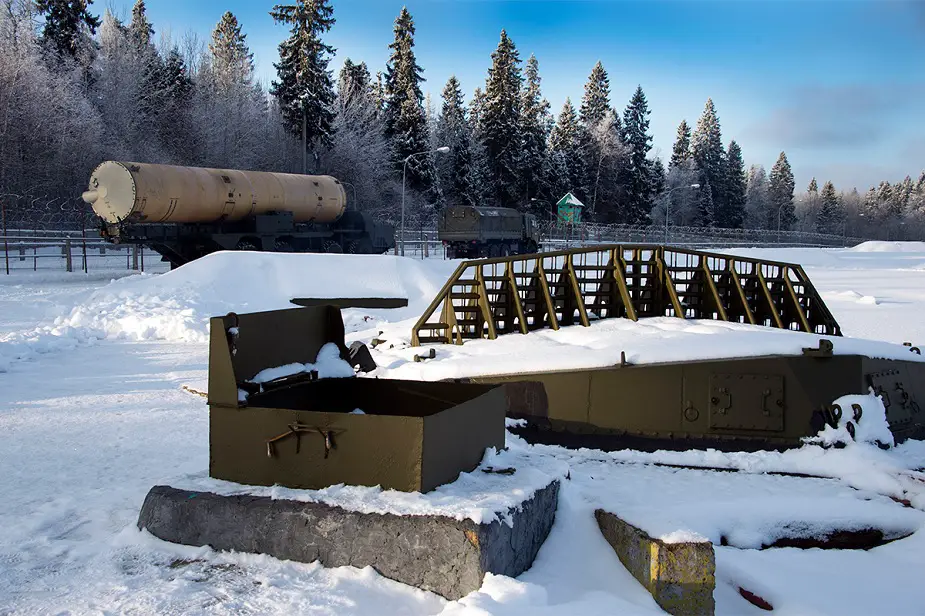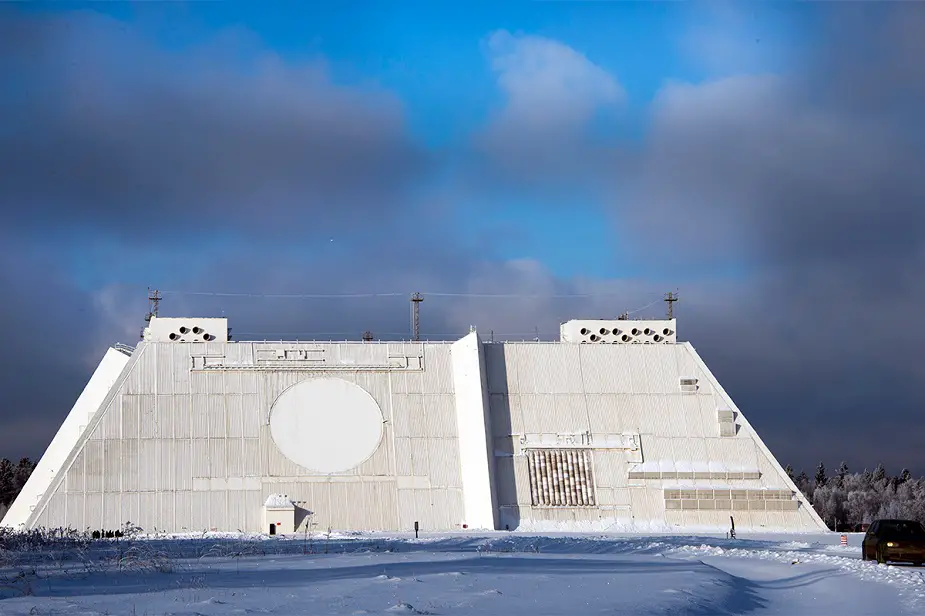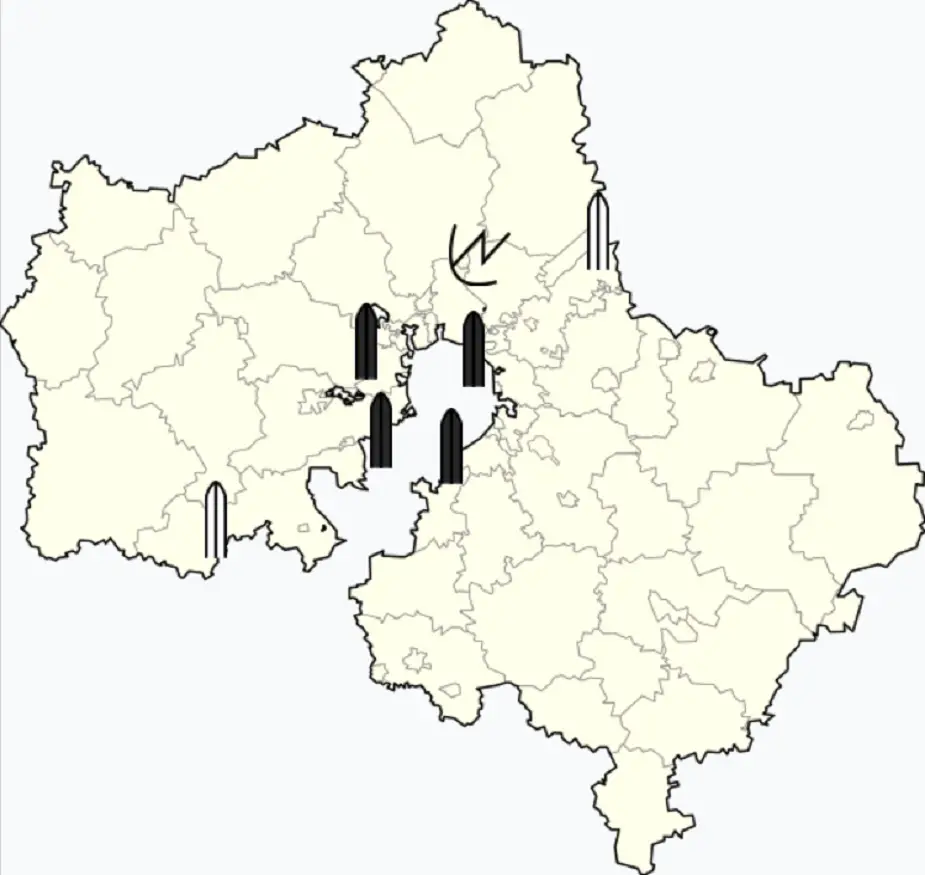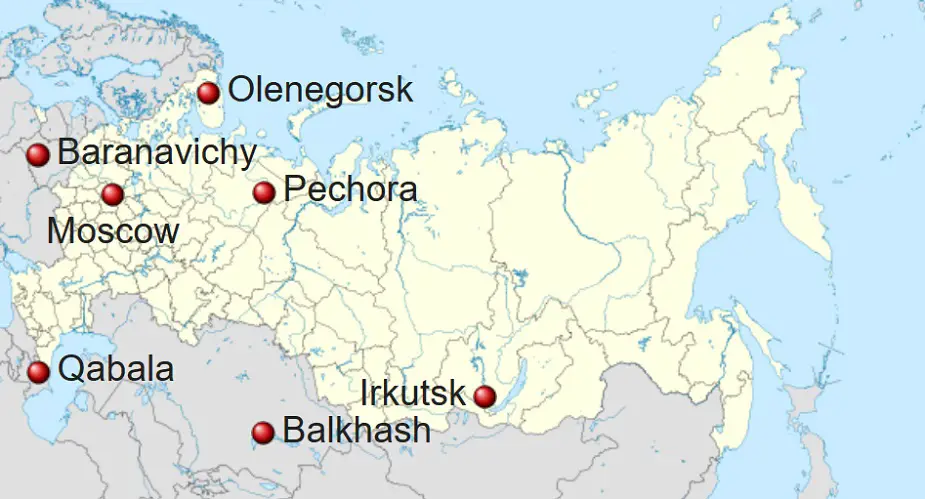Analysis: Moscow missile defense undergoes upgrade
The Moscow missile defense is undergoing a deep upgrade. Gazeta.ru online publication writes about the technical characteristics of A-135 missile defense.
 ABM missile silo under snow, transporter for 53Т6 missile in background (Picture source: mil.ru)
ABM missile silo under snow, transporter for 53Т6 missile in background (Picture source: mil.ru)
On the threshold of 1960-70s, Soviet designers concluded it was unrealistic to create an effective missile defense from a massive strike with the available and predicted level of scientific and technical knowledge. They called to develop information components of the space-missile defense, early warning space systems, and to focus on weapons to repel a limited strike by missiles which can overcome the missile shield. It was decided that at the given stage it would be appropriate to defend the capital city from single, accidental and provocative strikes or a limited group of ballistic missiles fired from third countries or an uncontrolled submarine.
In late 1969, the military agreed to build a multichannel firing range comprising two interception echelons - long (over-atmosphere) and close (atmospheric) capable of defending the main object against prospective missiles that can break through missile defense.
On June 10, 1971, the design of the system called A-135, long interception Amur complex and its range option Amur-P began.
Today, A-135 comprises a command and computing post with missile defense controls, A-925 long-range interception missile for the upper layers of the atmosphere and over the atmosphere (range 600 km, aerodynamic fin controls (in the atmosphere) and rotating engines (outside the atmosphere), second-echelon interceptor missile (close interception) - high-speed atmospheric interceptor 53T6 or PRS-1/PRS-1M with gas dynamic controls, four-sided radar Don-2N in Sofrino to track space objects with a diameter of 5 cm at a distance of 1,500 km, nuclear charges for antimissiles, and silos. Over a hundred antimissiles are on combat duty. The silos are not camouflaged, but reliably protected against a direct hit or terrorist attack.
A-135 enjoys broad capabilities. Firstly, the maximum detection range of ballistic targets is 1,200-1,500 km. The range for space objects is 600-1,000 km. Secondly, the system can simultaneously track 100 sophisticated ballistic targets and aim dozens of antimissiles at them. The system was created several decades ago and needs modernization, new electronic components and computers, as well as new antimissiles.
A-135 upgrades sometimes produced unexpected results. For example, new electronic elements were smaller in size and weight than predecessors. The four-sided radar in Sofrino got more free space, as a result.
The modernization of 53T6 antimissiles was complicated. Trials of the PRS-1M missile began in late November 2017. A source in the defense industry said a modern antimissile is much faster and lethal than its predecessor. Amur-P multichannel firing complex was deployed at Sary-Shagan range to test the Moscow A-135 missile defense.
Amur-P has a Don-2NP multirole radar, 5K80P command post with Elbrus computer, launch positions for close interception silo-based antimissiles, a technical position to prepare antimissiles and data transmission system 5Ya67 located at a distance of a hundred kilometers between them. Amur-P is deployed on sites 7, 8, 35, 6/52 of the tenth missile defense range. The antimissiles are launched from site 35.
Don-2NP with big phased antenna array is one part of the Moscow Don-2N radar near Sofrino. It detects, tracks targets and antimissiles, transmits commands to antimissiles and receives information from them. Amur launches close interception PRS-1M single-stage antimissiles with a discarding guided warhead of Novator design.
 Don-2N anti-ballistic missile radar (Picture source: mil.ru)
Don-2N anti-ballistic missile radar (Picture source: mil.ru)
All 53T6 antimissiles (over 100) for A-135 were already produced in Soviet time. The production stopped after the Soviet collapse. In early and mid-2000s trials at Sary-Shagan were held only to extend the life cycle of antimissiles. A missile was withdrawn from the silo, delivered to the range and fired. The trials delivered a decision on whether PRS-1M life cycle could be extended. However, the process could not be endless. The life cycle of antimissiles on combat duty would end sooner or later.
In 2010, Almaz-Antey Concern resumed the production of solid-fuel engines for 53T6 antimissiles. On December 20, 2011, the first PRS-1M with a new engine was launched. Related enterprises of the concern cooperated to resume batch production of antimissiles.
On November 23, 2017, a completely new missile was launched from site 35. It resembled the previous option made of durable steel and composite materials and armed with detachable warhead with gas dynamic steering engines. The upgraded antimissile had a new engine, onboard equipment with modern electronic base, and construction materials. Its combat capabilities were considerably expanded, a source in the defense industry said.
The upgraded antimissile developed a higher speed. 53T6 accelerated to 3 km/sec in several seconds and was the fastest missile in the world. The upgraded option developed a speed of 4 km/sec. The sustainable overload also increased. Previously, it did not exceed 200 G. Now it is close to 300 G (S-75 antiaircraft missile could sustain only 8 G, modern antiaircraft guided missiles - not more than 30 G). The onboard equipment of PRS-1M operates normally under the overload.
The destruction range in altitude and distance of the new antimissile increased 1.5-fold. It intercepts reentry vehicles of ballistic missiles at an altitude of over 50 km. The missile carries a nuclear warhead of several kilotons. A fragmentation warhead is being developed for PRS-1M.
PRS-1M increased the effectiveness of A-135 to defend Moscow and the Central industrial region. The modernization increased precision and the defense zone, a high-ranking source in the defense industry said. The higher guidance precision made it possible to arm 53T6 with an ordinary high-explosive fragmentation warhead. It gives A-135 a new quality to fight hypothetical terrorist missile attacks.
Even a low-yield nuclear explosion over the capital city would be a disaster. The explosion of an ordinary warhead is quite another thing, as it would not trigger catastrophic consequences. However, the work to arm 53T6 with a fragmentation warhead has been suspended because of a lack of financing, Gazeta.ru said
 A-135 ABM system in Moscow Oblast. The black missiles are operational 53T6s, the unfilled missiles are non-operational 51T6s and the dish is the Don-2N radar in Sofrino, which also has a 53T6 complex co-located with it (Picture source: Bogomolov.PL)
A-135 ABM system in Moscow Oblast. The black missiles are operational 53T6s, the unfilled missiles are non-operational 51T6s and the dish is the Don-2N radar in Sofrino, which also has a 53T6 complex co-located with it (Picture source: Bogomolov.PL)
 A-135 Early Warning Radars (Picture source: Wikipedia)
A-135 Early Warning Radars (Picture source: Wikipedia)
© Copyright 2020 TASS. All rights reserved. This material may not be published, broadcast, rewritten or redistributed.



















